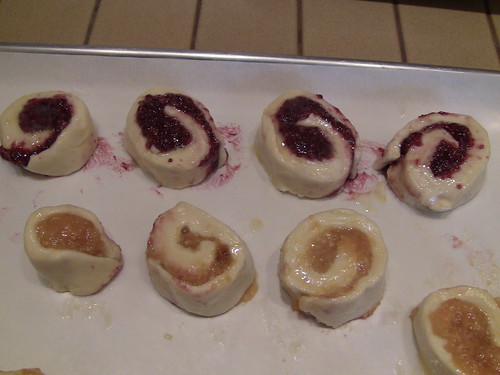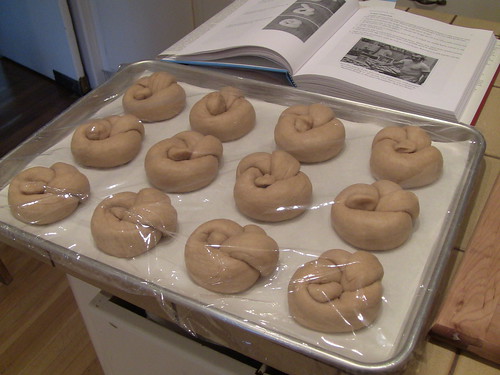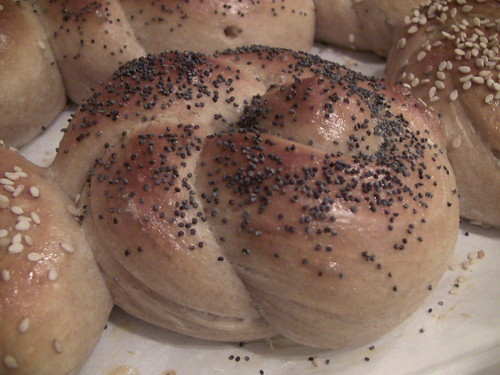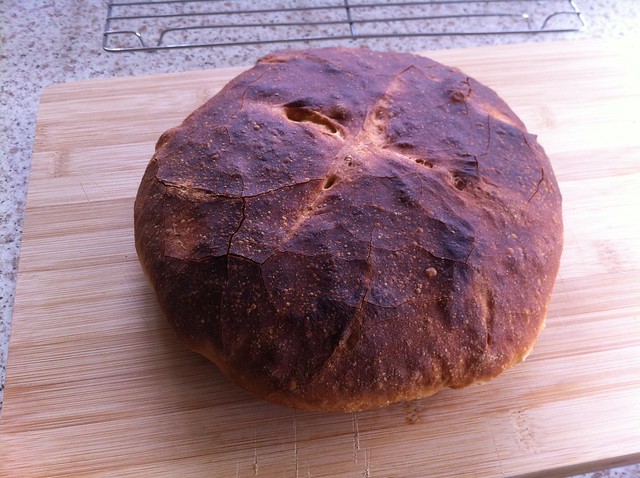I've been homing in on a 50% Whole Wheat sourdough loaf, made with a levain built entirely with Whole Wheat flour. This quest has been ongoing (but relaxed) for about a year, and recently I've been close: flavors are especially to our liking, crumb al dente as we like, and nearly as open as desired, but still room to improve. Today, I think I've hit it.
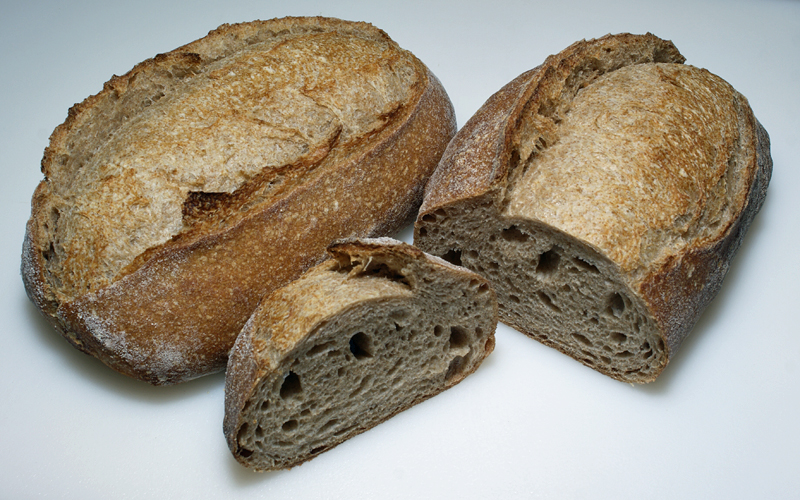
My previous attempts' short-falls were all dough strength related, in two words: slack dough. And slack dough directly led to shaping difficulties, flat loaves, and closed crumbs.
Getting to this point has been evolutionary.
I've only been baking sourdough a little more than two years. For the first six months I religiously mixed and kneaded doughs in my KA mixer, usually following the formulae authors' recommended mixing times and mixer speeds (generally 2 or 3 minutes on speed one, often followed by 1 to 3 minutes on speed 2). Early on, I learned about Stretch-and-Fold; never a fan of hand-kneading I adapted it quickly. I was mostly content with the results, but, prompted by TFLer suggestions, I switched to hand-mixing, and for about a year except for speciality doughs, e.g., Foccacia, Brioche, the mixer gathered dust. I learned how dough "feels" in all its various stages. I also developed a skin rash, on my mixing hand only, that may--and I emphasize "may"; I've not yet seen a dermatologist--be attributable to flours or sourdough.
For the past four months I've returned to mixing doughs in the mixer, and wearing latex gloves when I S&F, or hand manipulate dough. The rash is clearing slowly.
At the same tiime I was in the middle of my quest to bake a satisfactory 50% WW loaf. I'll define satisfactory; these are in priority order:
1. Good, strong wheaty flavor
2. Al dente crumb; i.e., when you mash it, it springs back; when you bite it, there is resistance.
3. Open crumb. Now I'm not looking for gaping holes. I want irregular size aveoles, the biggest of which occupy no more than the thickness of a good sandwich slice--about 3/8ths of an inch radius. I frequently use sourdough breads for sandwiches. Unquestionably, sandwich-making is its singlemost use. So, I don't want mustard or mayo dribbling on my shirt front. I also think #2 is closely related to #3--if you don't have 3, you don't have 2.
4. Eye-appealing loaves. If I can have 1, 2, and 3 I'm a happy baker; if I can also have 4 I'm an elated baker.
So, back to the evolution.
Two changes from my earlier routine are, I reasoned, the keys to this success.
1. I now machine-knead the dough on speed 2 for 7 minutes, following a 1 hour autolyse. Subsequently, I still S&F 3 or 4 times at 1 hour intervals (3 or 4 depends on the perceived tenacity of the dough).
2. I retard the dough at reduced temperature (54°F) for 15 hours.
Furthermore, I believe these two changes are coupled, meaning it requires both to achieve the desired open crumb. I haven't found a corraborating "expert" reference yet, but I'm certain I perceive a change in dough's attributes occuring between S&F's and the beginning and end of retarded fermentation. I retard dough primarily for flavor development, but I'm convinced, too, it also conditions the doughs' physical behaviors.
I got the idea for this two changes from two TFL members: #1 from TxFarmer's blog, and #2 from an e-discussion with Proth5.
The formula for this bread is simple:
100% hydrated levain 30% (all whole wheat flour except seed starter)
Whole Wheat flour 35%
Bread Flour (KA) 50%
Salt 2%
Hydration 68%
Preheat: 500°F
Bake: 450°F with steam 15 mins; finish bake 450°F (steam removed)
I've also changed the way I refresh my seed starter. Following Debra Wink's guidance, now, when I build levain for baking I make enough extra to completely replace my seed starter with fresh levain. I normally build levain using bread flour. This time I built the levain using Whole Wheat flour. Consequently, I also built a small amount of levain with bread flour to refresh my seed starter for the week.
As usual, I after mixing the dough, and refreshing my seed starter I still had levain left over. I mixed the two together, fed the mix 1:3:3 with a 50/50 mix of Bread and Whole Wheat flours, and popped it into the refrigerator overnight. This morning, while I worked the bread baking, I let the leftover levain come to room temperature, and work another three hours. While the bread loaves were proofing I made a 50% Whole Wheat version of my Sourdough Biscuits ala Cookie (see http://www.thefreshloaf.com/node/21536/sourdough-biscuits-trying-real-thing and http://www.thefreshloaf.com/node/21967/sourdough-biscuits-trying-real-thing-take-2 ).

It's been a fun Whole Wheat Sunday
David G








